المواضيع ذات الصلة
[Windows 11/10] How to Use Windows Update to Update System and BIOS
Applicable Products: Notebook, Desktop, All-in-One PC, Gaming Handheld, MiniPC
Maintaining the latest state of the operating system helps ensure device security and performance. The Windows operating system provides a convenient update mechanism through Windows Update, enabling users to easily access the latest features, patches, and security updates.
This article will guide you on how to use Windows Update to obtain the latest updates and the BIOS of your device.
Note: If you receive a notification that your Windows version has reached the end of service, you can use the Windows 11 Installation Assistant to help upgrade your system to the latest supported version to continue receiving support. For more information, please refer to Microsoft’s support documentation.
Please go to the corresponding instruction based on the current Windows operating system on your device:
Windows 11 operating system
Obtaining the Latest Updates via Windows Update
- Type and search [Windows Update settings]① in the Windows search bar, then click [Open]②.
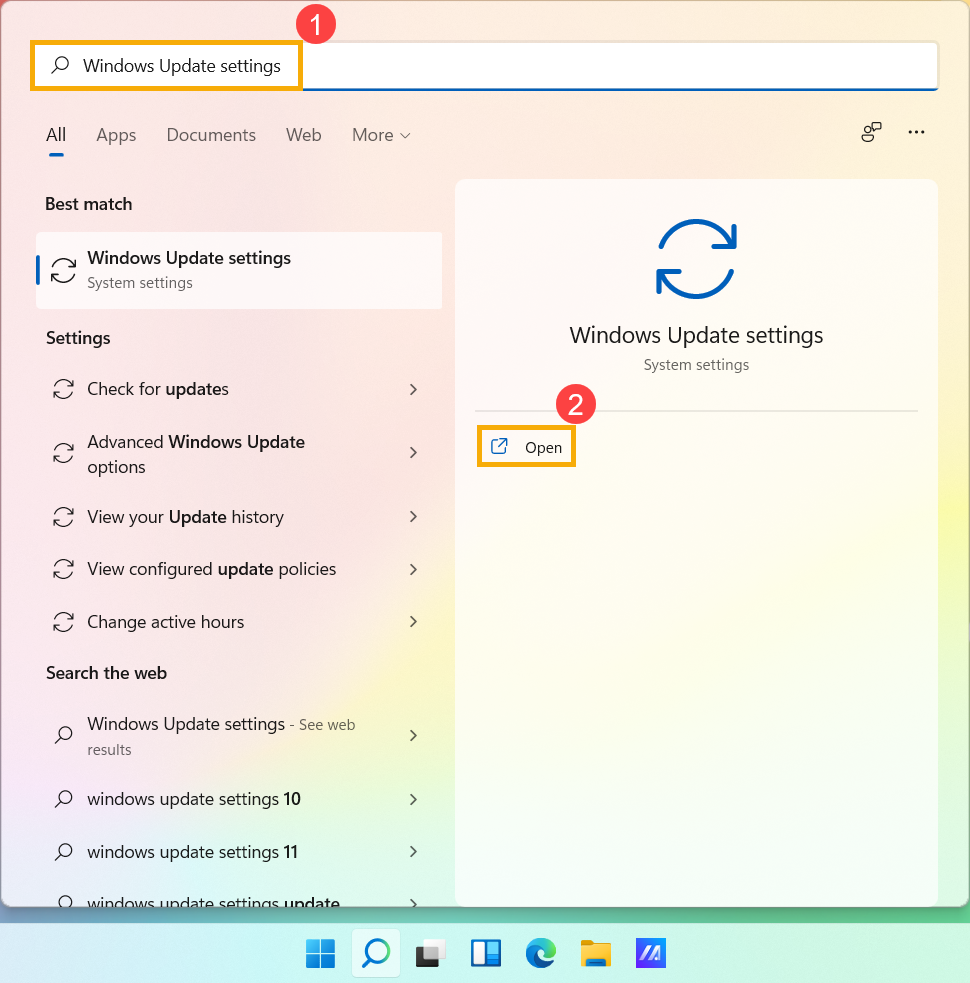
- Click [Check for updates]③.
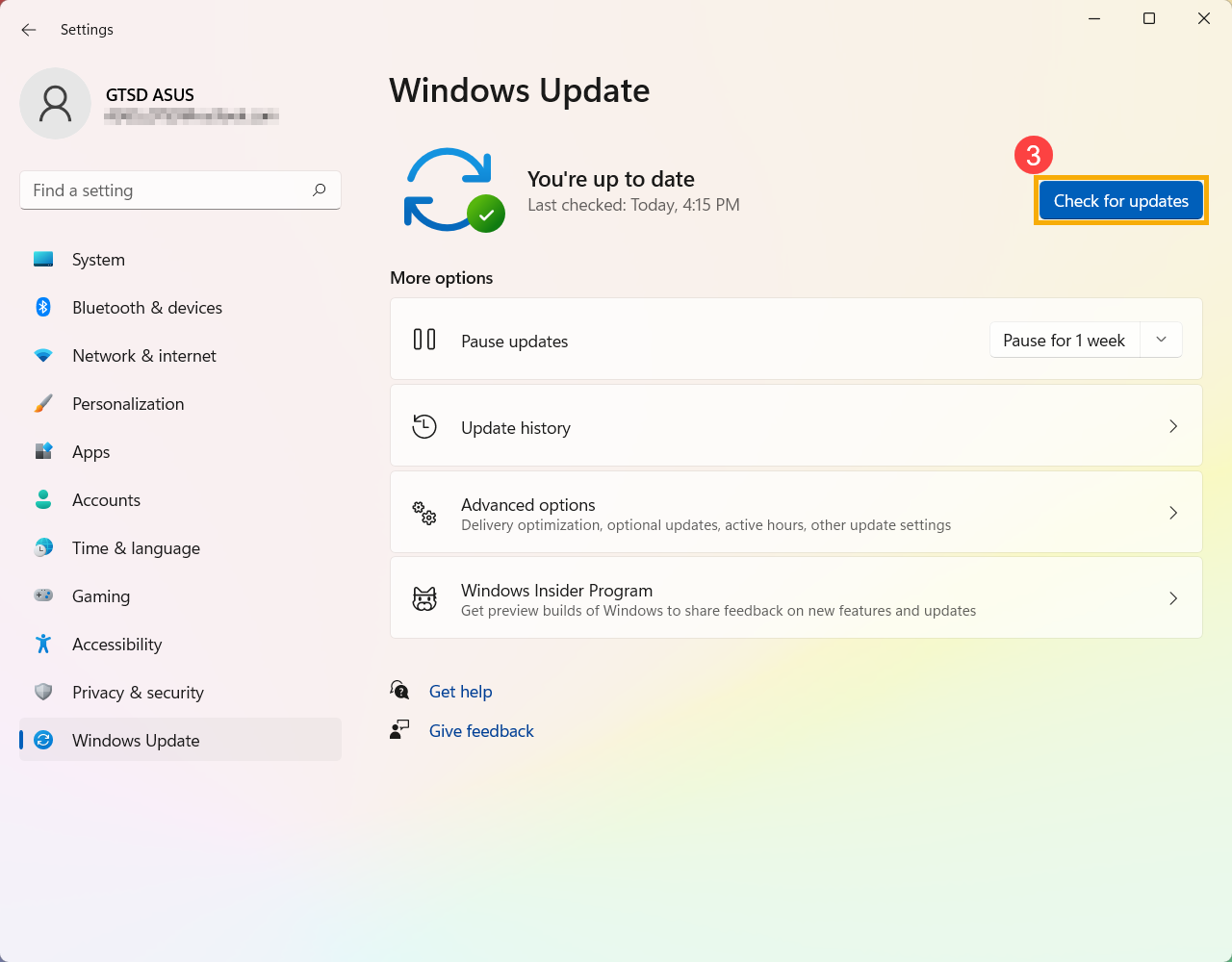
- If a feature update is available for your device, it will appear separately on the Windows Update page and start to download and install. Some updates may need to be additionally clicked 'Install now' by yourself.
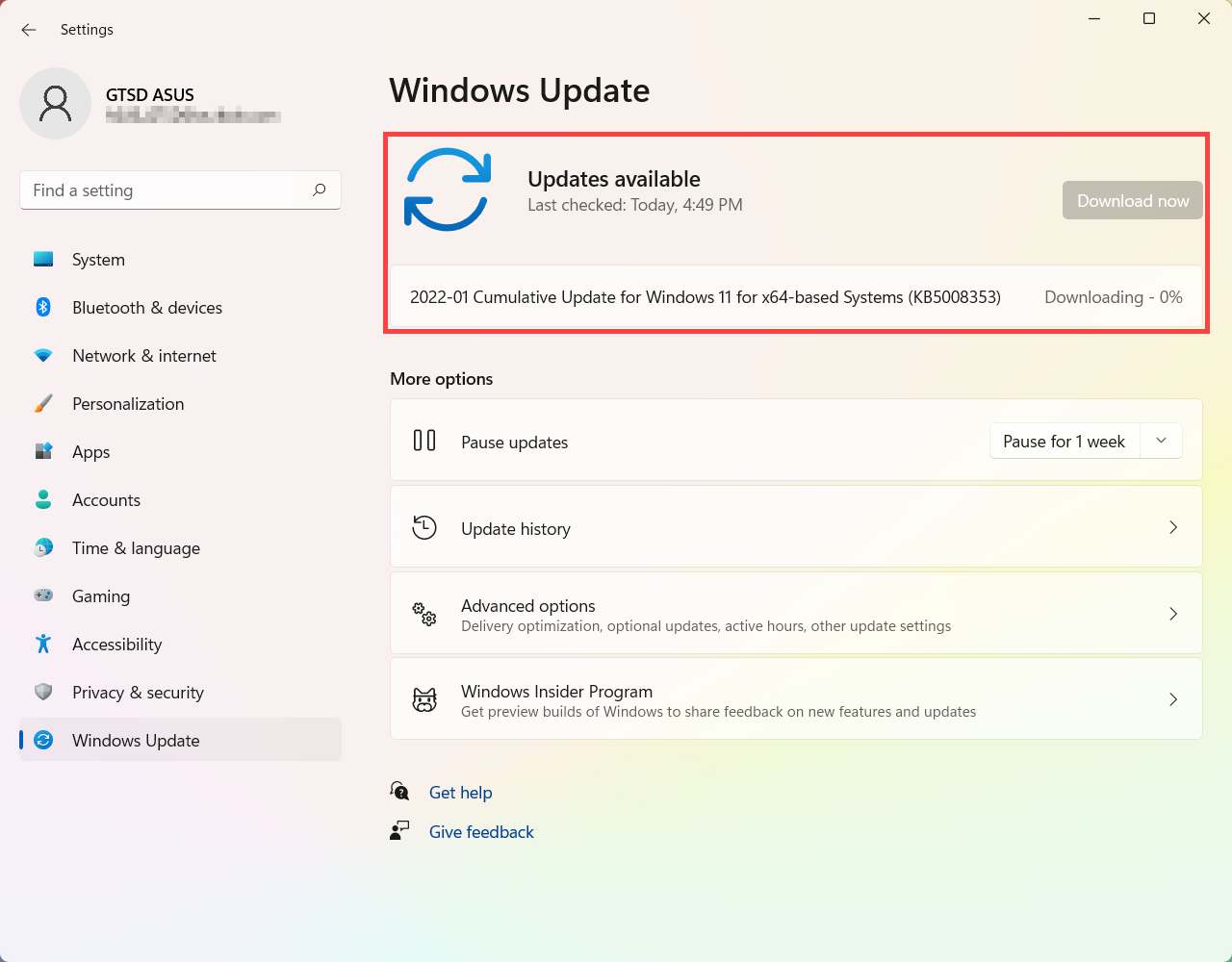
- Some updates may ask restarting your device, so you can select [Restart now]④. Otherwise, if you don’t want to restart the device yet, you can select Schedule the restart to set up the restart schedule.
Note: Before restarting the device, please save your current work.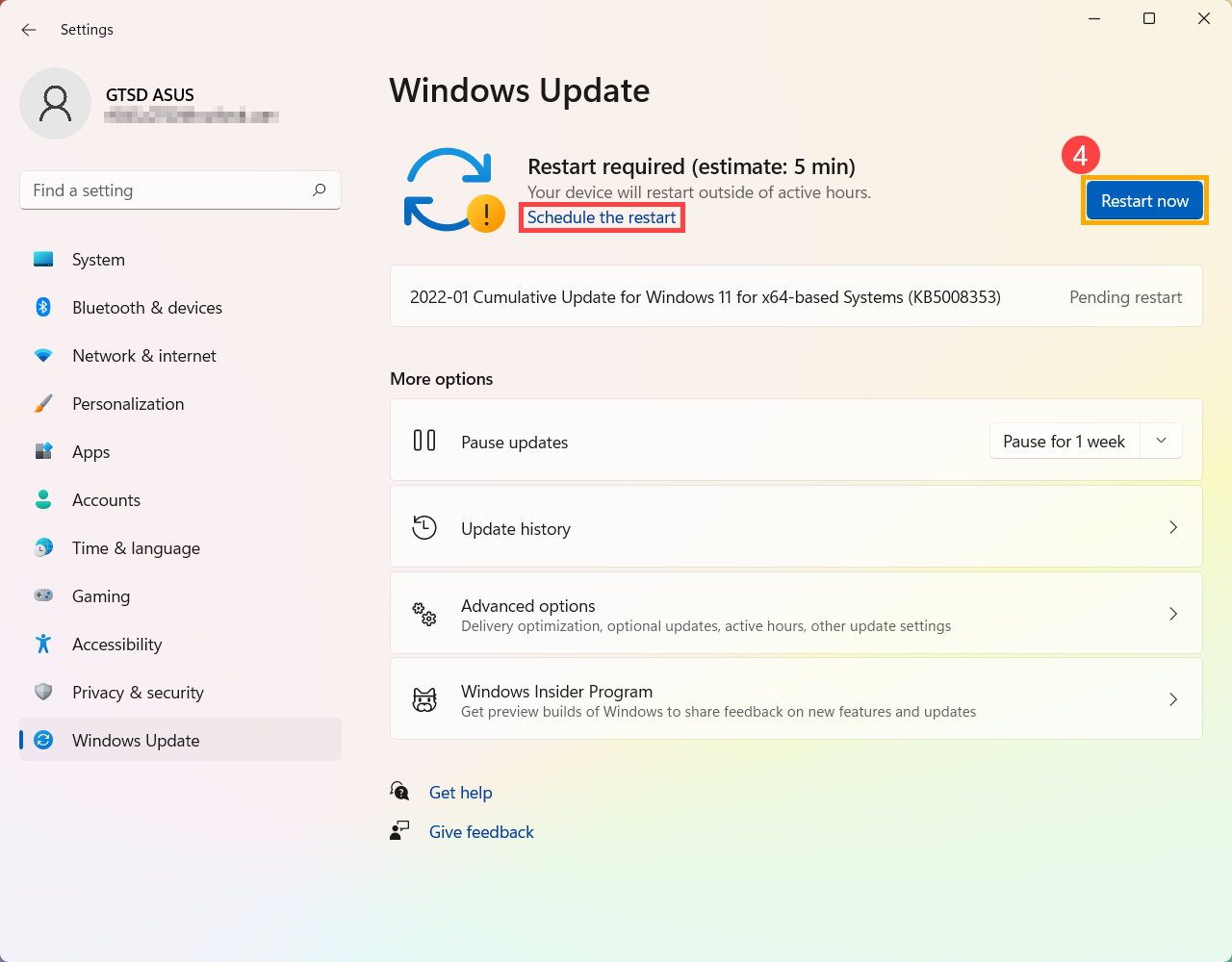
- After you finish and complete the update procedures, you can select Update history to see the information of previous update data.
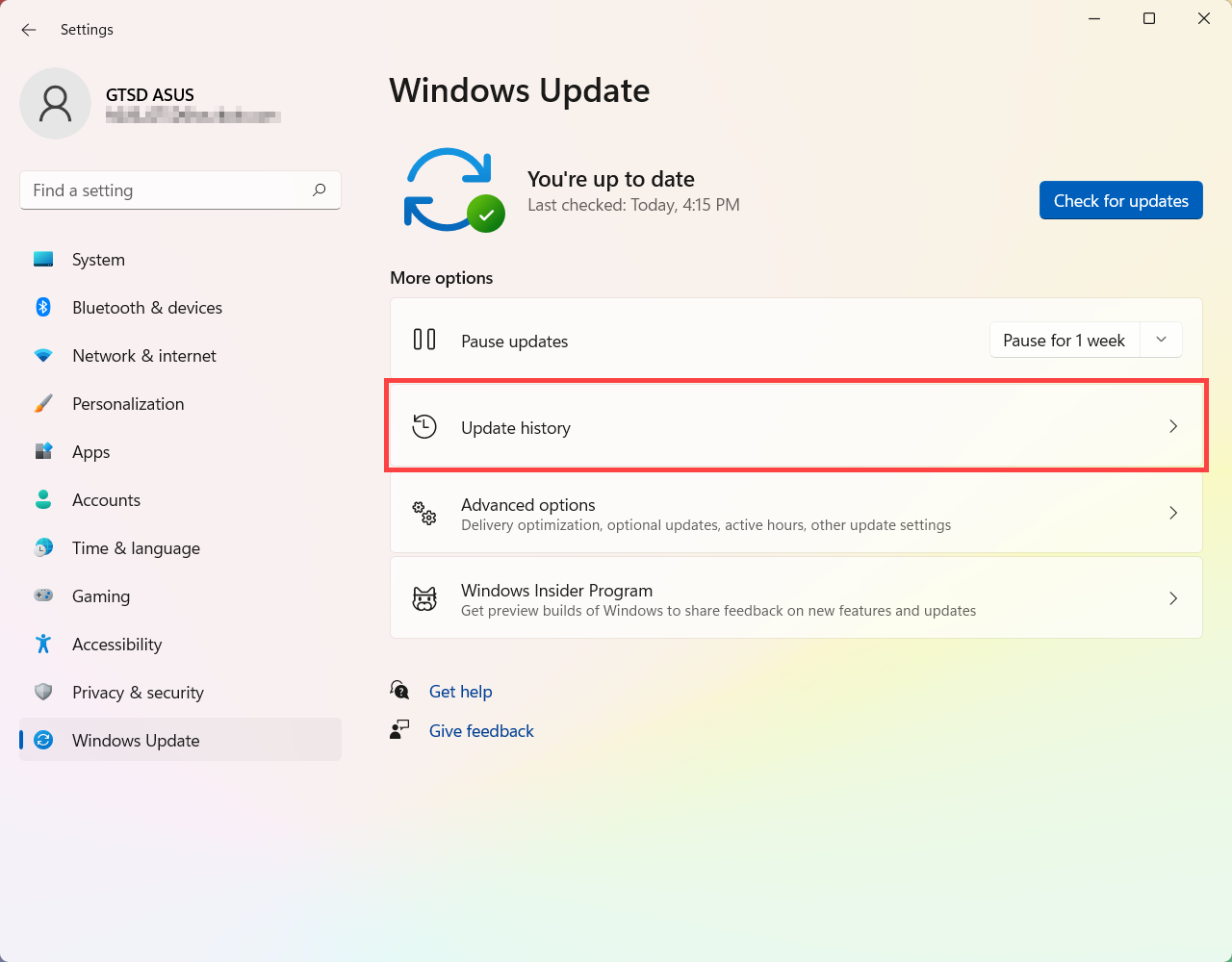
Updating BIOS via Windows Update
Windows 8.1 and earlier operating system versions cannot automatically update BIOS through Windows Update. Only ASUS products pre-installed with Windows 10/11 can update BIOS through Windows Update.
- When the BIOS update has been downloaded and is awaiting installation, you may receive a message similar to the one shown below, indicating that a system restart is required before BIOS update.
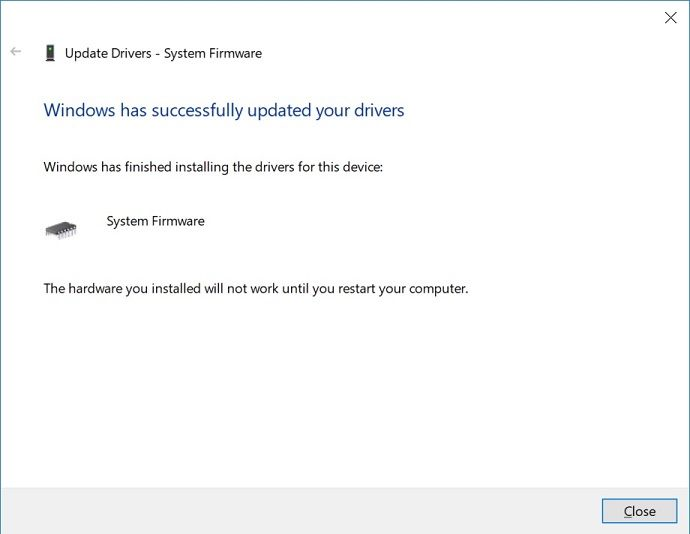
Alternatively, you may find a similar message by checking Device Manager > Firmware > System Firmware > Properties.
- Save your current work and restart your device. Your device will display a screen similar to the one below for updating BIOS. (The BIOS update screen may vary slightly depending on the model)
During the BIOS update, a progress bar will move from left to right automatically. No manual intervention is required, as the BIOS update will proceed automatically.
Note: Ensure that your device is plugged in during the BIOS update, and do not disconnect the power supply. If the BIOS update is interrupted, the system may not function properly, and it will require service at a repair center.- BIOS update screen in UEFI interface
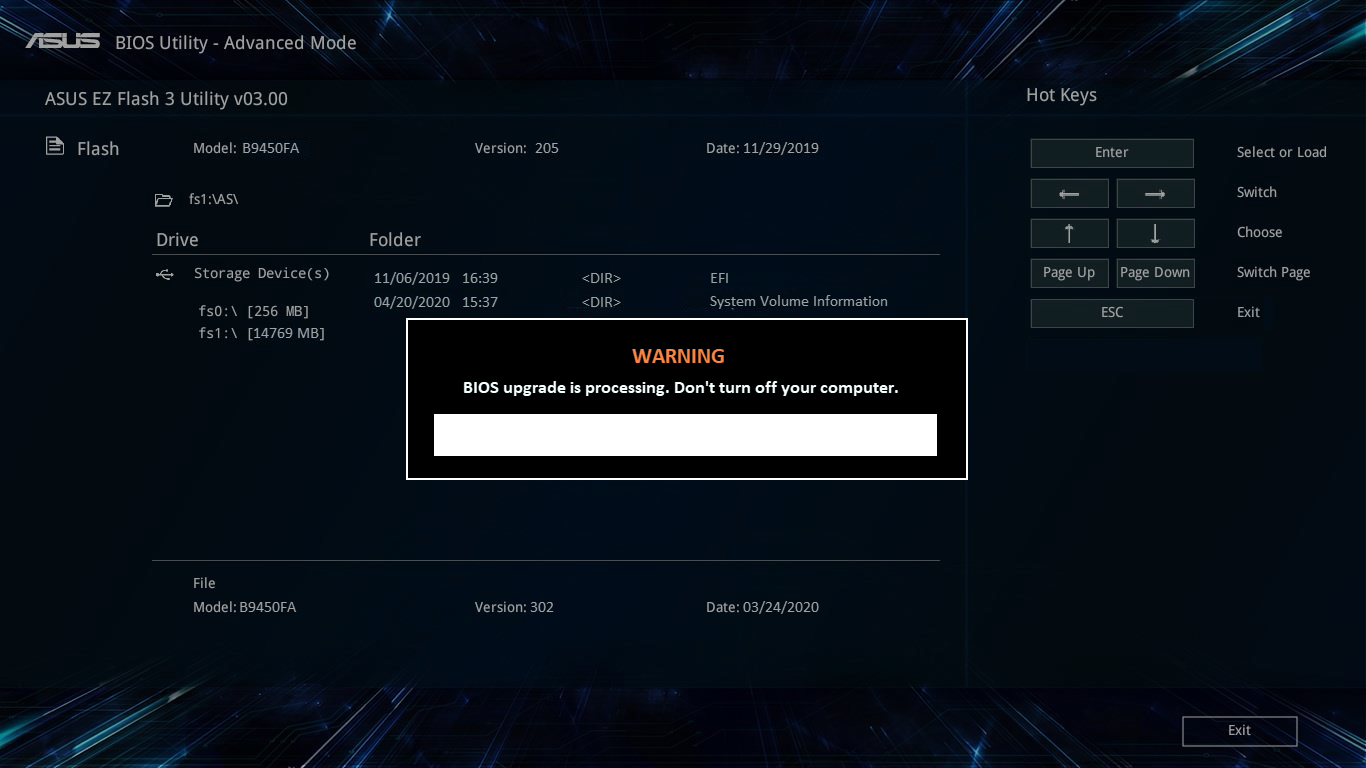
- BIOS update screen in Legacy interface
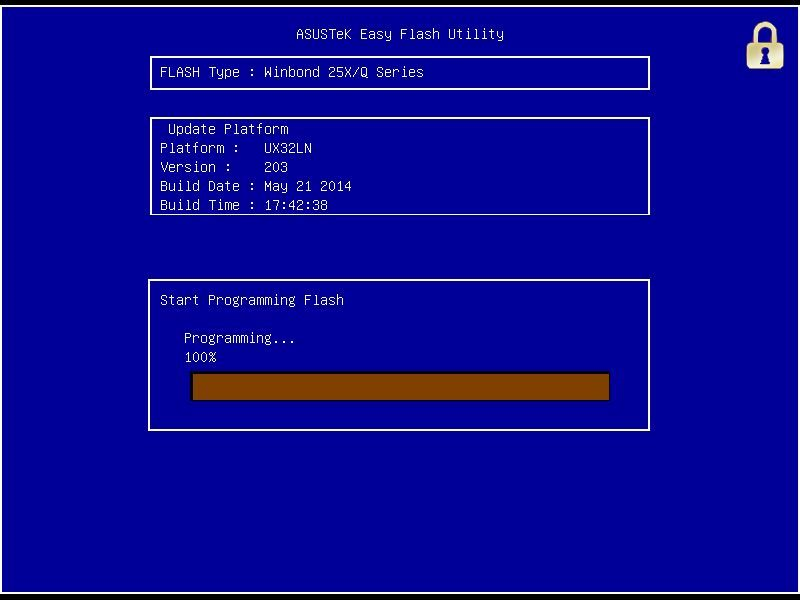
- BIOS update screen in MyASUS in UEFI interface
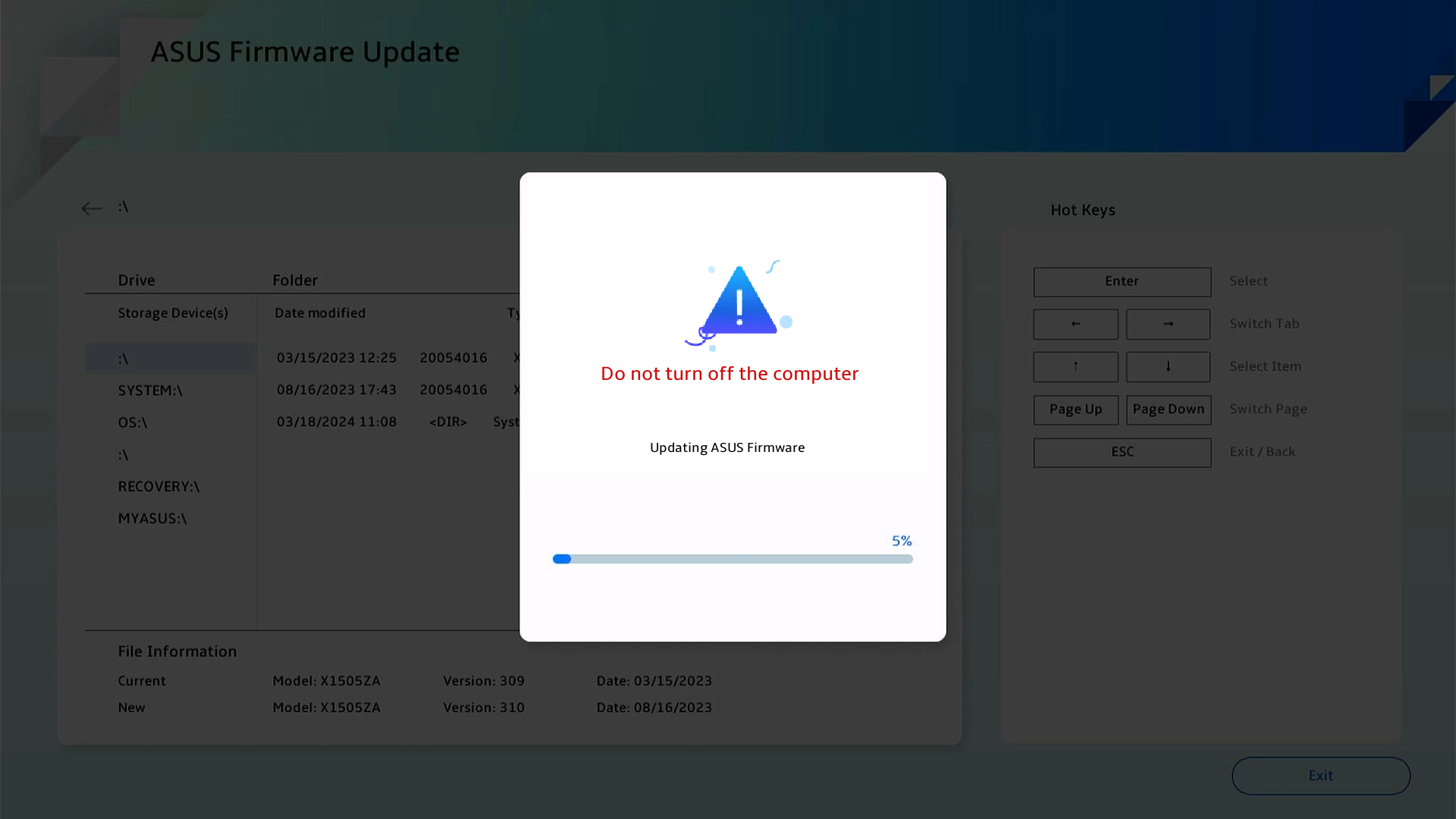
- BIOS update screen in 2025 UX interface
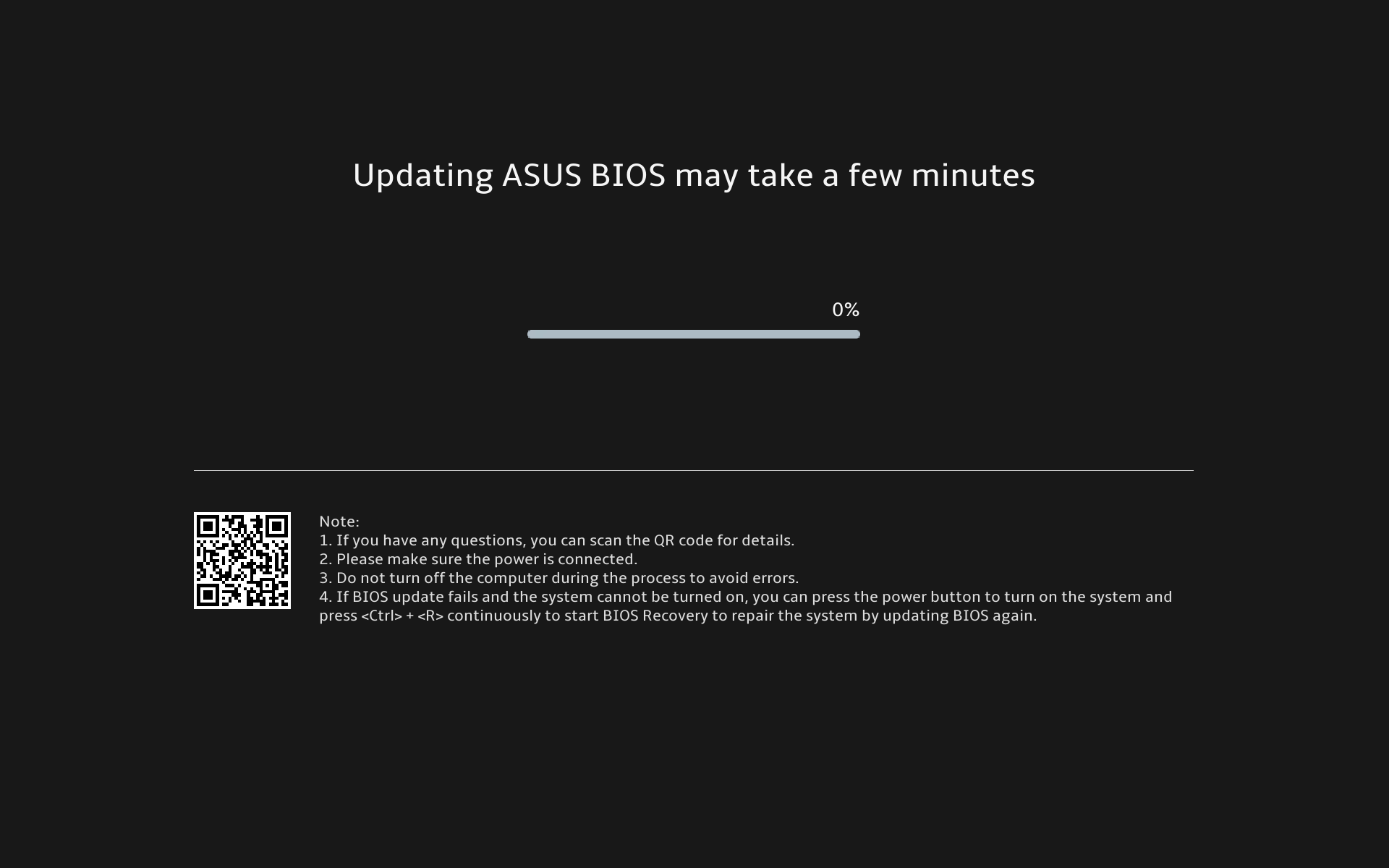
- BIOS update screen in UEFI interface
- Once your device restarts and boots into the Windows operating system, the BIOS update is complete. Learn more about How to check the BIOS version to confirm the successful completion of the update.
If the BIOS update is interrupted for any reason, ensure that the power is connected and restart to check if the update resumes automatically. If the update cannot continue, and the system does not display, please send the device to a repair center for service.
Windows 10 operating system
Obtaining the Latest Updates via Windows Update
- Type and search [Windows Update settings]① in the Windows search bar, then click [Open]②.

- Click [Check for updates]③.
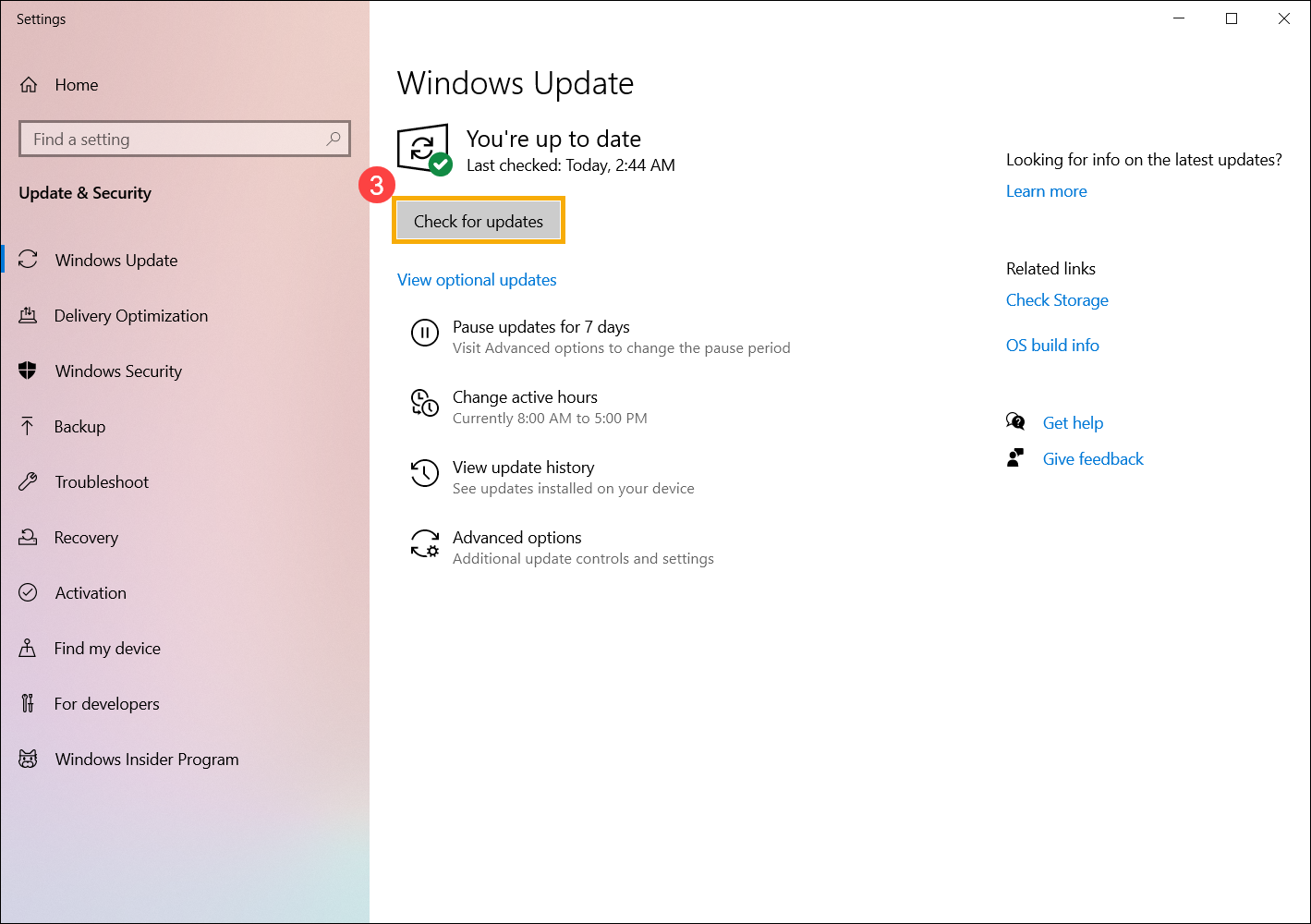
- If a feature update is available for your device, it will appear separately on the Windows Update page and start to download and install. Some updates may need to be additionally clicked 'Install now' by yourself.
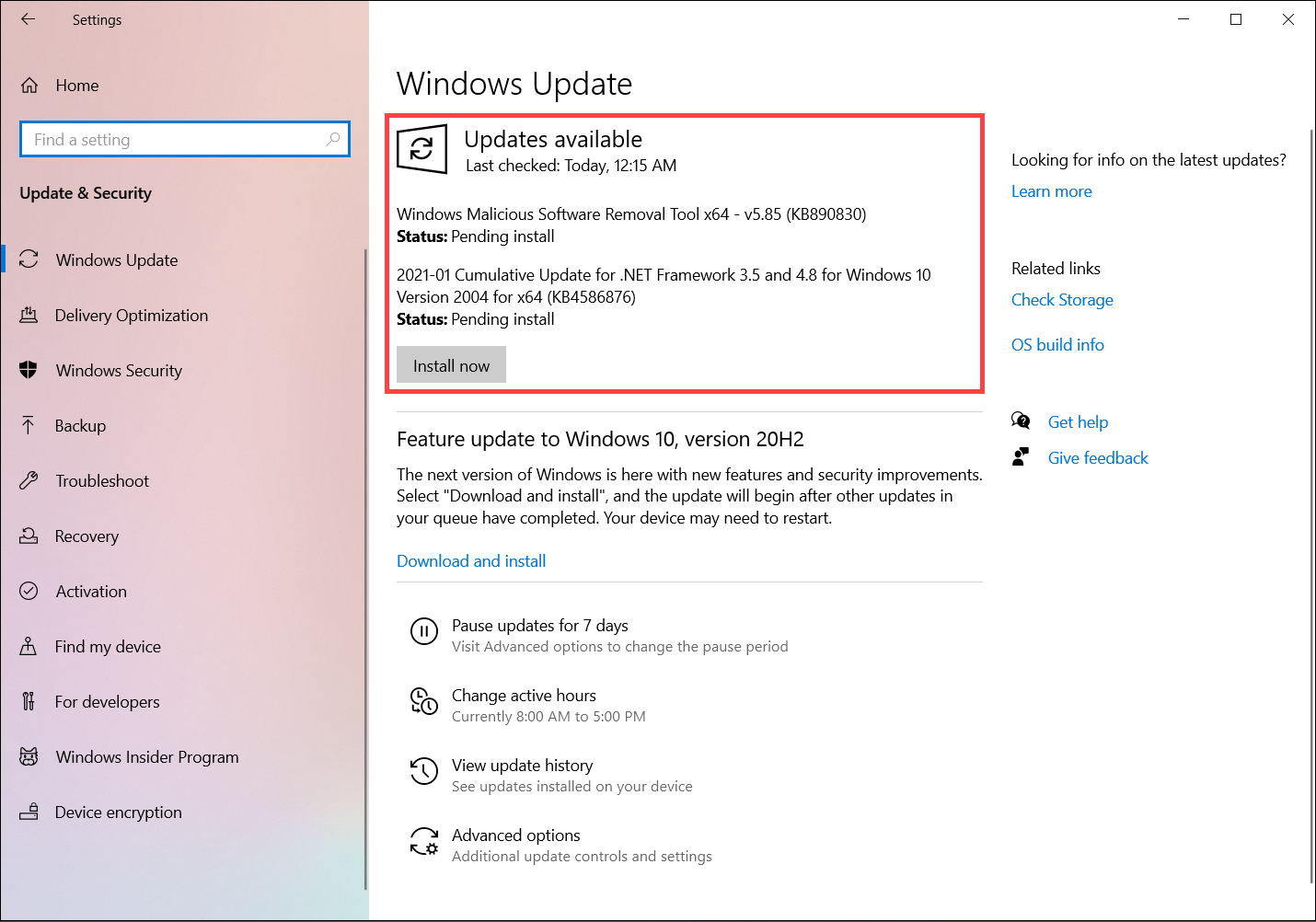
- Some updates may ask restarting your device, so you can select [Restart now]④. Otherwise, if you don’t want to restart the device yet, you can select Schedule the restart to set up the restart schedule.
Note: Before restarting the device, please save your current work.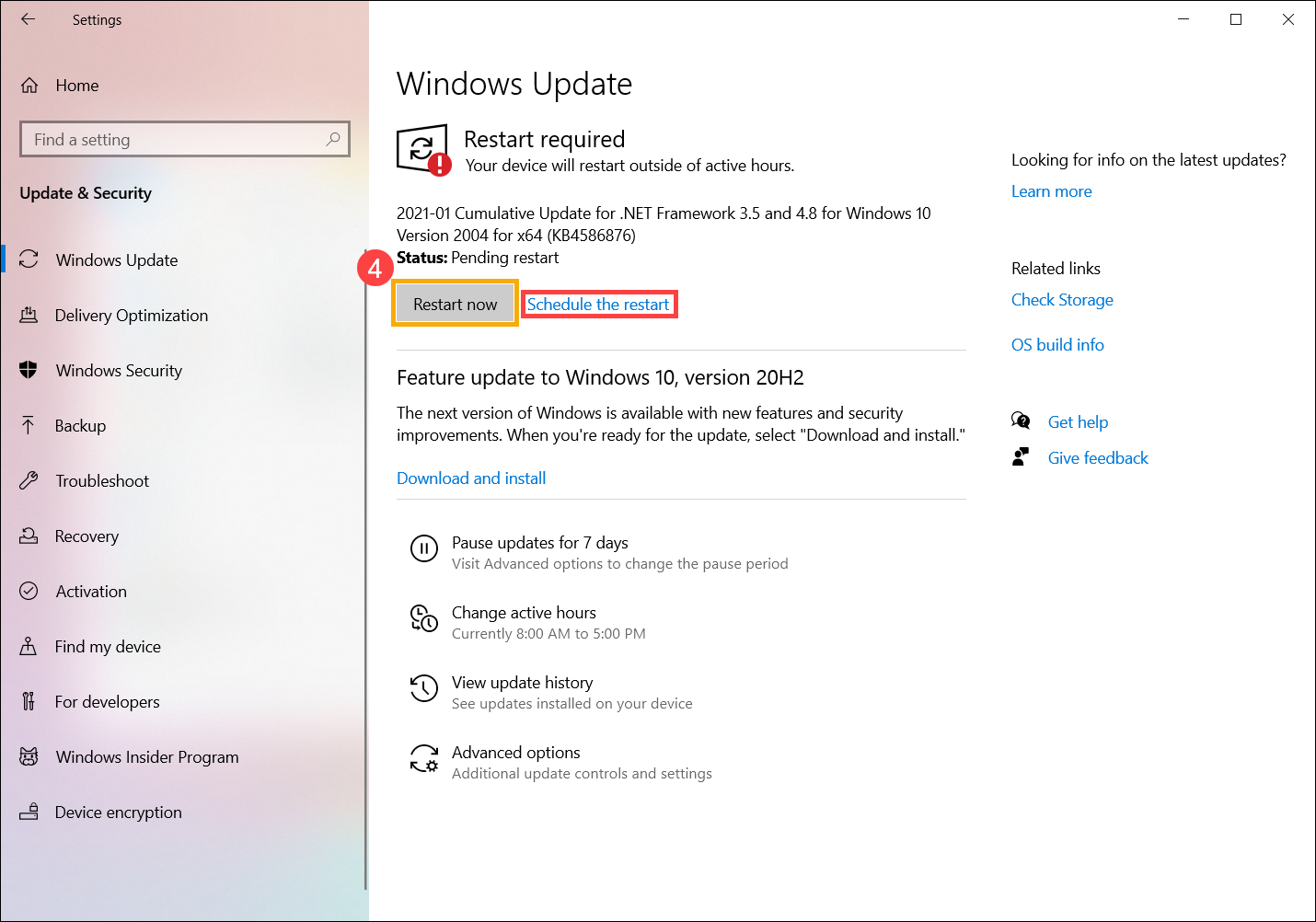
- After you finish and complete the update procedures, you can select View update history to see the information of previous update data.
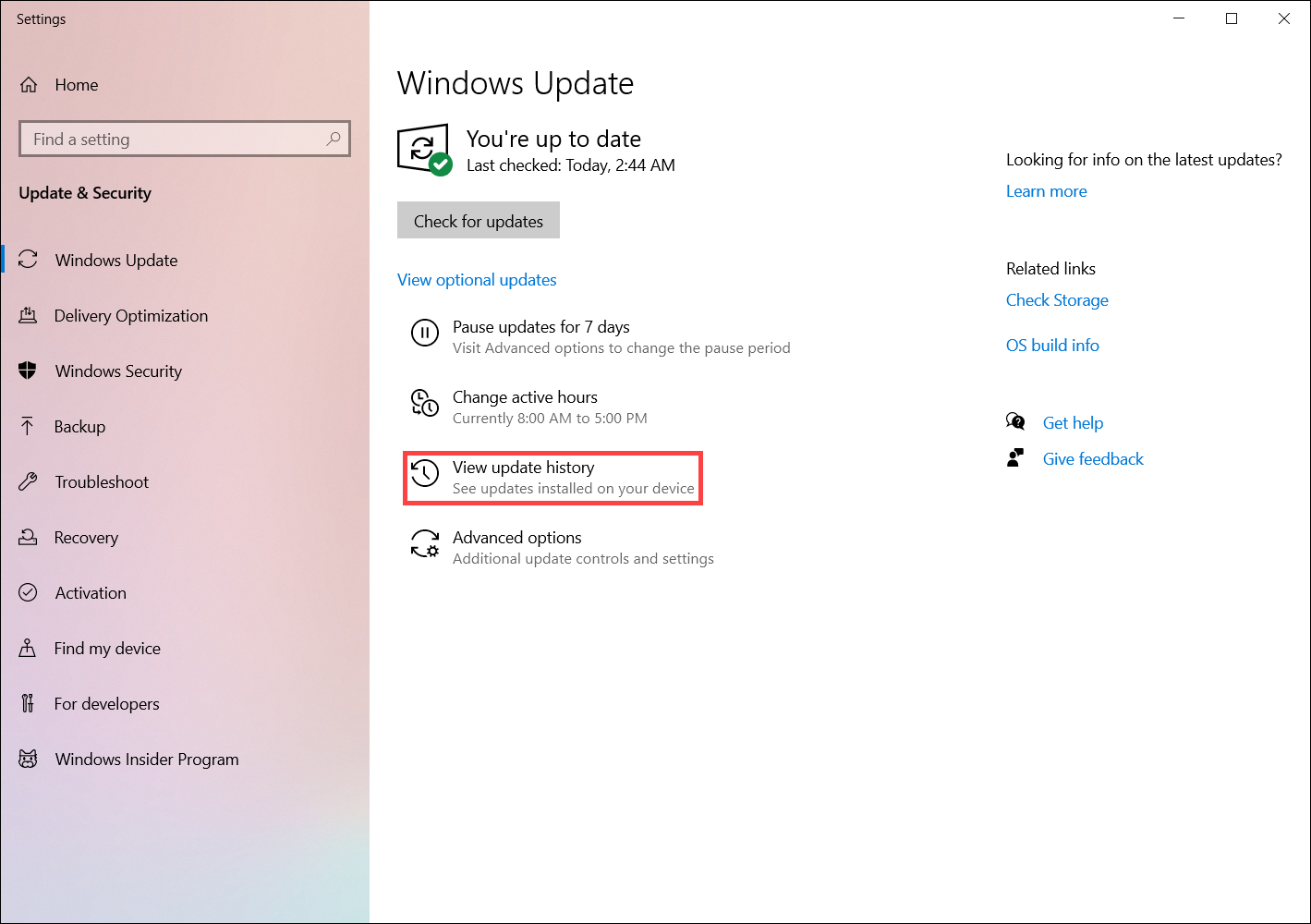
Updating BIOS via Windows Update
Windows 8.1 and earlier operating system versions cannot automatically update BIOS through Windows Update. Only ASUS products pre-installed with Windows 10/11 can update BIOS through Windows Update.
- When the BIOS update has been downloaded and is awaiting installation, you may receive a message similar to the one shown below, indicating that a system restart is required before BIOS update.

Alternatively, you may find a similar message by checking Device Manager > Firmware > System Firmware > Properties.
- Save your current work and restart your device. Your device will display a screen similar to the one below for updating BIOS. (The BIOS update screen may vary slightly depending on the model)
During the BIOS update, a progress bar will move from left to right automatically. No manual intervention is required, as the BIOS update will proceed automatically.
Note: Ensure that your device is plugged in during the BIOS update, and do not disconnect the power supply. If the BIOS update is interrupted, the system may not function properly, and it will require service at a repair center.- BIOS update screen in UEFI interface

- BIOS update screen in Legacy interface

- BIOS update screen in MyASUS in UEFI interface

- BIOS update screen in 2025 UX interface

- BIOS update screen in UEFI interface
- Once your device restarts and boots into the Windows operating system, the BIOS update is complete. Learn more about How to check the BIOS version to confirm the successful completion of the update.
If the BIOS update is interrupted for any reason, ensure that the power is connected and restart to check if the update resumes automatically. If the update cannot continue, and the system does not display, please send the device to a repair center for service.